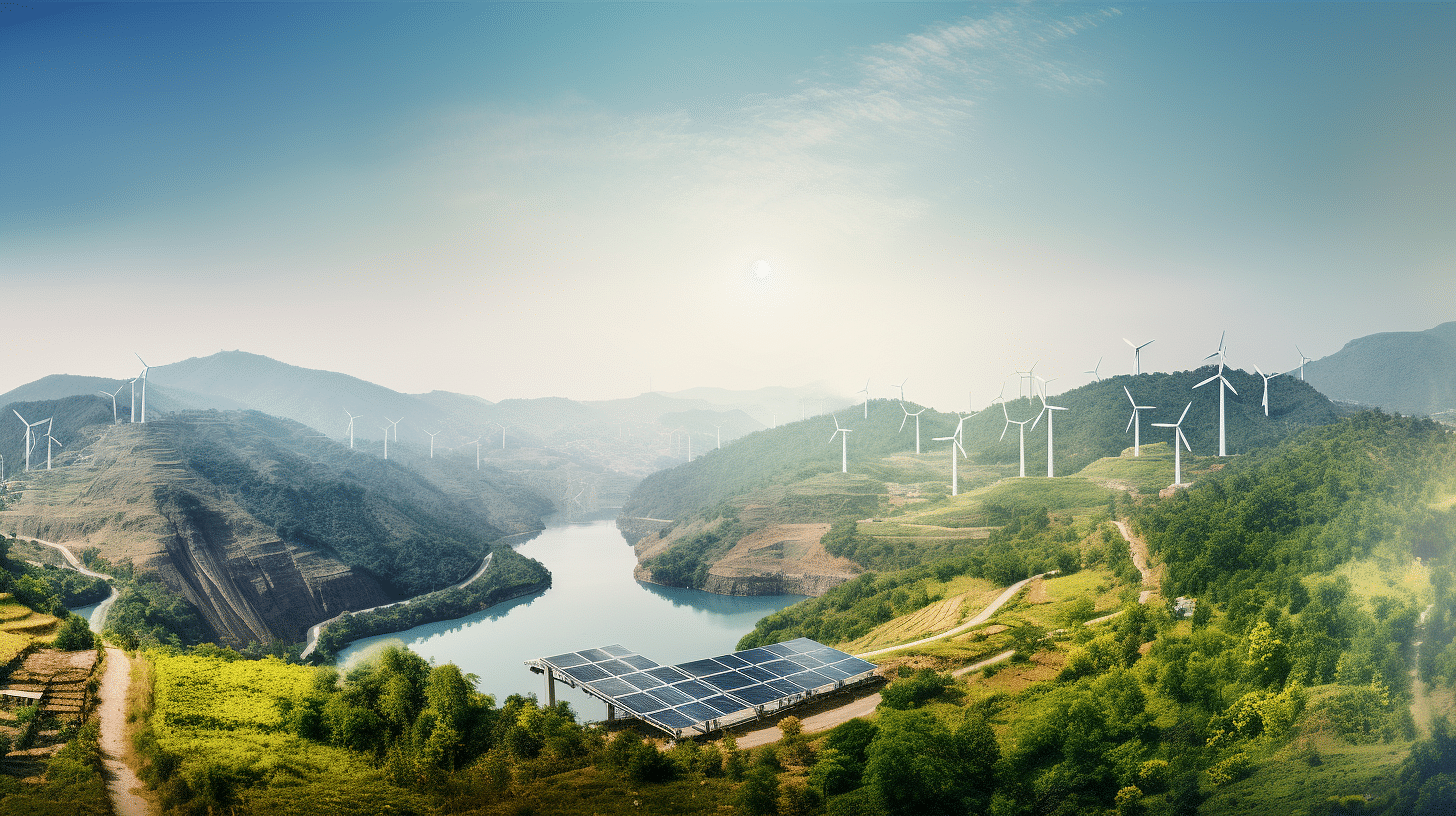As the world grapples with the urgent need to transition to sustainable energy, India has emerged as a global leader in the renewable energy sector. Ranked 3rd in the Renewable Energy Country Attractive Index in 2021, India is now the 3rd largest energy-consuming country globally. Furthermore, India ranks 4th in the world for renewable energy installed capacity, wind power capacity, and solar power capacity, as per the REN21 Renewables 2022 Global Status Report.
India’s commitment to sustainable energy is evident in its ambitious target set at COP26: achieving 500 GW of non-fossil fuel-based energy by 2030, the world’s largest expansion plan in renewable energy. As of February 2023, India’s installed renewable energy capacity has increased by 396% in the last 8.5 years, reaching over 174.53 GW (including large hydro), which represents 42.5% of the country’s total capacity. In 2022, India saw the highest year-on-year growth in renewable energy additions, with a 9.83% increase.
The rapid increase in installed solar energy capacity, now at 63.3 GW, highlights the country’s commitment to clean energy. A favourable Foreign Direct Investment (FDI) policy allows up to 100% FDI under the automatic route for renewable energy generation and distribution projects, subject to provisions of The Electricity Act, 2003.
India’s renewable energy potential is massive, with over 1,000 GW possible. As of May 2022, installed renewable energy capacity stood at 160 GW, accounting for 40% of the total installed capacity. The country has set a target to reduce its carbon intensity by 45% by 2030, achieve 50% cumulative electric power installed capacity from renewables by 2030, and reach net-zero carbon emissions by 2070. Green hydrogen is also on the agenda, with a target of producing five million tonnes by 2030.
The government has played a significant role in promoting renewable energy by introducing various schemes and initiatives. For example, 59 solar parks with a combined capacity of 40 GW have been approved, and the world’s largest renewable energy park, a 30 GW solar-wind hybrid project, is under installation in Gujarat. Wind energy has a target of 30 GW in offshore capacity by 2030, with three potential sites identified.
The Union Budget 2023 has identified Green Growth as a priority, allocating $2.4 billion to the National Hydrogen Mission and supporting 4 GWh Battery Energy Storage Systems through Viability Gap Funding. The government has also committed to reducing India’s total projected carbon emissions by 1 billion tonnes by 2030.
The National Green Hydrogen Mission has been approved, with an initial outlay of INR 19,744 crore. As part of the Atmanirbhar Bharat initiative, a Production Linked Incentive (PLI) scheme in Solar PV manufacturing has been introduced, with financial outlays of INR 24,000 crore.
Furthermore, the government has announced the Wind-Solar Hybrid Policy in 2018 to promote large grid-connected wind-solar PV hybrid systems for efficient utilisation of transmission infrastructure and land, addressing the intermittency challenge of renewable power sources.
In conclusion, India’s remarkable progress in renewable energy, driven by government schemes and initiatives, has positioned the country as a global leader in sustainable energy. With a clear focus on data and numbers, India’s commitment to creating a sustainable world is not just aspirational but backed by tangible action and results.



![Read more about the article [Scoop] PhonePe receives over Rs 740 Cr capital infusion from Singapore parent](https://blog.digitalsevaa.com/wp-content/uploads/2022/10/phonepe11561023770690-1578482785956-300x150.png)

![Read more about the article [Funding alert] Student housing company Your-Space raises $10M in Series A](https://blog.digitalsevaa.com/wp-content/uploads/2022/01/yourstory-logo-1200x720-300x180.jpeg)
![Read more about the article [Funding alert] Innovaccer joins unicorn club at $1.3B valuation with latest capital round](https://blog.digitalsevaa.com/wp-content/uploads/2021/02/Imageqwpd-1614190445324-300x150.jpg)



